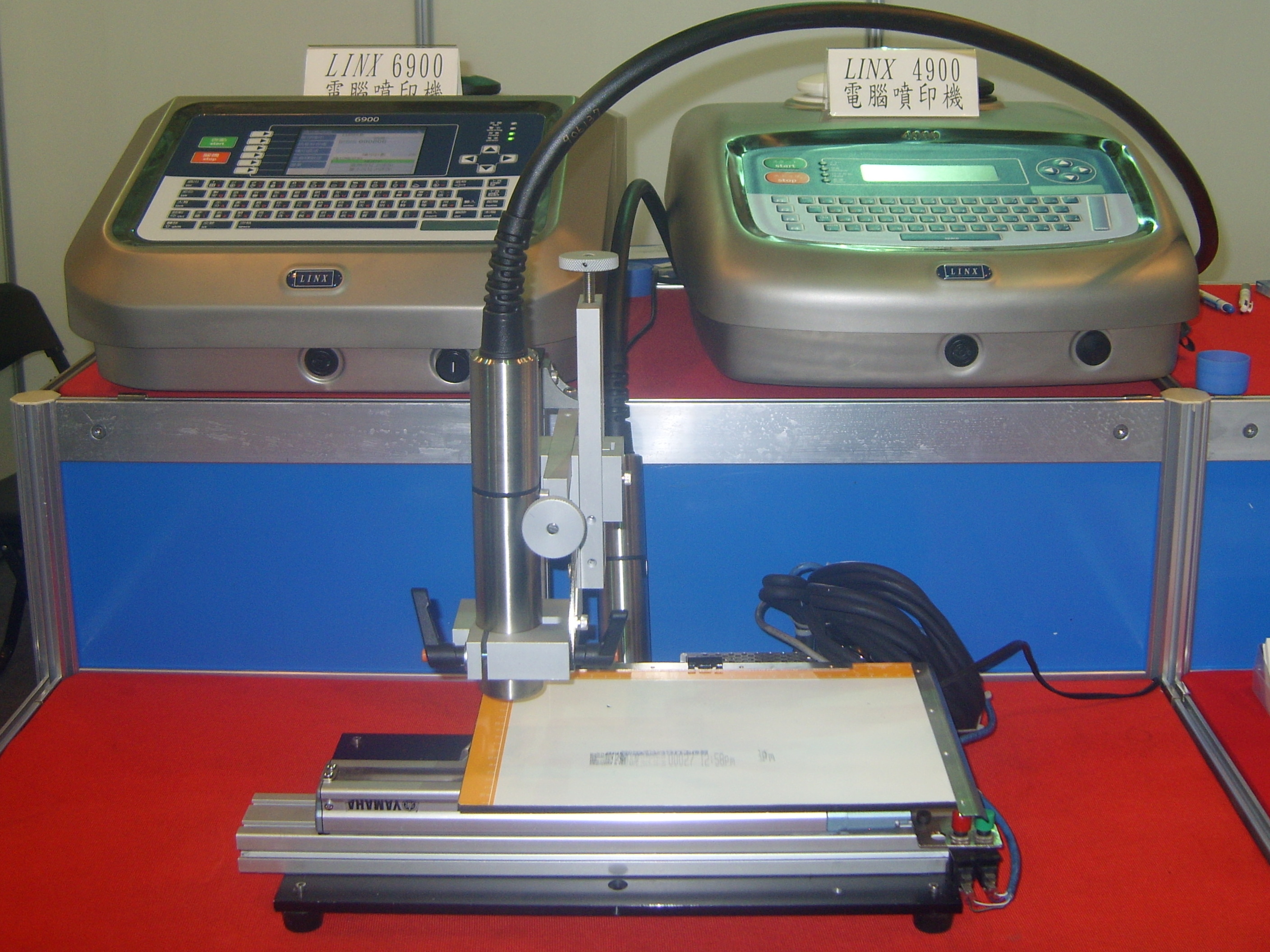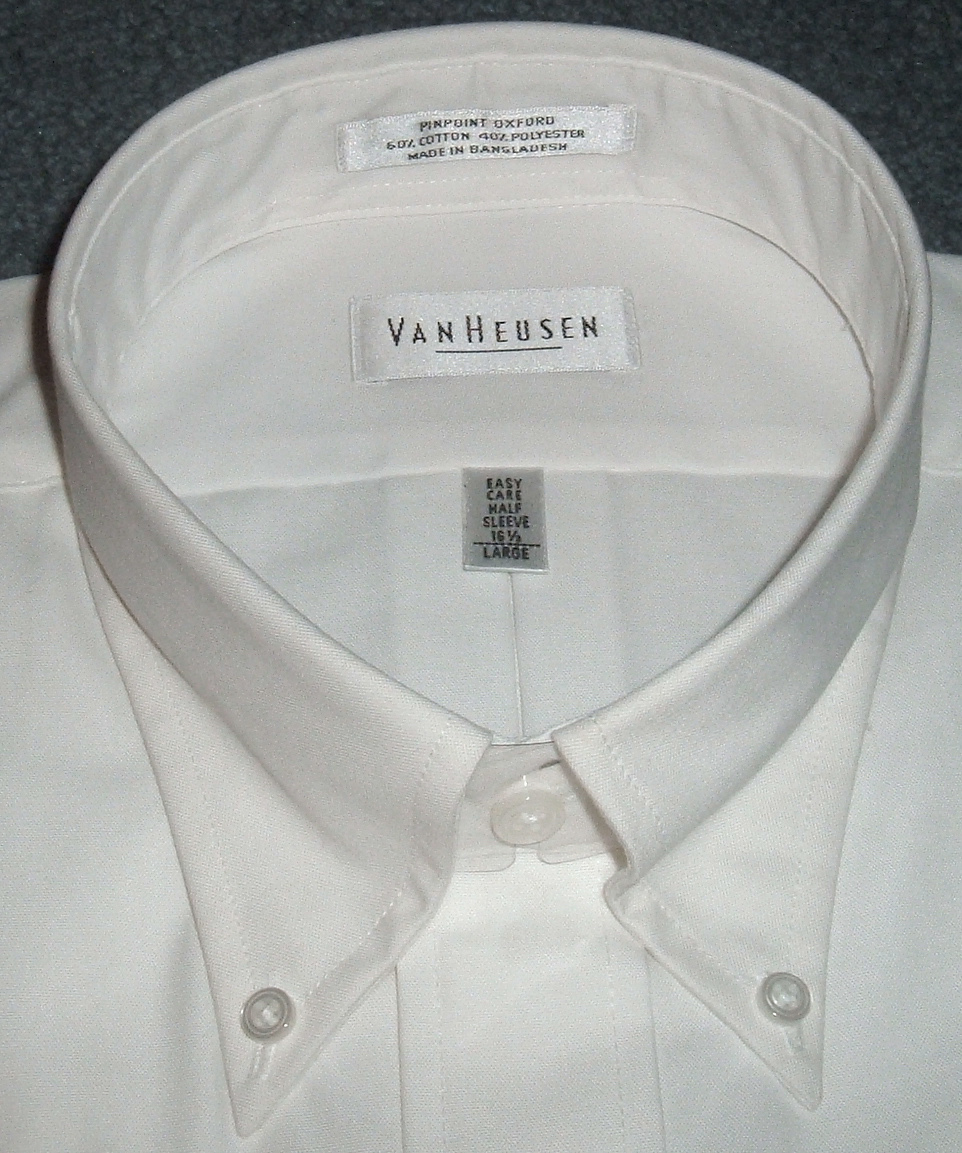|
Barcode Printer
A barcode printer is a computer peripheral for printing barcode labels or tags that can be attached to, or printed directly on, physical objects. Barcode printers are commonly used to label cartons before shipment, or to label retail items with UPCs or EANs. The most common barcode printers employ one of two different printing technologies. Direct thermal printers use a printhead to generate heat that causes a chemical reaction in specially designed paper that turns the paper black. Thermal transfer printers also use heat, but instead of reacting the paper, the heat melts a waxy or resin substance on a ribbon that runs over the label or tag material. The heat transfers ink from the ribbon to the paper. Direct thermal printers are generally less expensive, but they produce labels that can become illegible if exposed to heat, direct sunlight, or chemical vapors. Barcode printers are designed for different markets. Industrial barcode printers are used in large warehouses and ... [...More Info...] [...Related Items...] OR: [Wikipedia] [Google] [Baidu] |
Peripheral
A peripheral or peripheral device is an auxiliary device used to put information into and get information out of a computer. The term ''peripheral device'' refers to all hardware components that are attached to a computer and are controlled by the computer system, but they are not the core components of the computer, such as the CPU or power supply unit. In other words, peripherals can also be defined as devices that can be easily removed and plugged into a computer system. Several categories of peripheral devices may be identified, based on their relationship with the computer: *An ''input device'' sends data or instructions to the computer, such as a mouse, keyboard, graphics tablet, image scanner, barcode reader, game controller, light pen, light gun, microphone and webcam; *An ''output device'' provides output data from the computer, such as a computer monitor, projector, printer, headphones and computer speaker; *An ''input/output device'' performs both input and outp ... [...More Info...] [...Related Items...] OR: [Wikipedia] [Google] [Baidu] |
Barcode
A barcode or bar code is a method of representing data in a visual, machine-readable form. Initially, barcodes represented data by varying the widths, spacings and sizes of parallel lines. These barcodes, now commonly referred to as linear or one-dimensional (1D), can be scanned by special optical scanners, called barcode readers, of which there are several types. Later, two-dimensional (2D) variants were developed, using rectangles, dots, hexagons and other patterns, called ''matrix codes'' or ''2D barcodes'', although they do not use bars as such. 2D barcodes can be read using purpose-built 2D optical scanners, which exist in a few different forms. 2D barcodes can also be read by a digital camera connected to a microcomputer running software that takes a photographic image of the barcode and analyzes the image to deconstruct and decode the 2D barcode. A mobile device with an inbuilt camera, such as smartphone, can function as the latter type of 2D barcode reader using special ... [...More Info...] [...Related Items...] OR: [Wikipedia] [Google] [Baidu] |
Universal Product Code
The Universal Product Code (UPC or UPC code) is a barcode symbology that is widely used worldwide for tracking trade items in stores. UPC (technically refers to UPC-A) consists of 12 digits that are uniquely assigned to each trade item. Along with the related International Article Number (EAN) barcode, the UPC is the barcode mainly used for scanning of trade items at the point of sale, per the specifications of the international GS1 organisation. UPC data structures are a component of Global Trade Item Numbers (GTINs) and follow the global GS1 specification, which is based on international standards. But some retailers (clothing, furniture) do not use the GS1 system (rather other barcode symbologies or article number systems). On the other hand, some retailers use the EAN/UPC barcode symbology, but without using a GTIN (for products sold in their own stores only). Research indicates that the adoption and diffusion of the UPC stimulated innovation and contributed to the growth ... [...More Info...] [...Related Items...] OR: [Wikipedia] [Google] [Baidu] |
European Article Number
The International Article Number (also known as European Article Number or EAN) is a standard describing a barcode symbology and numbering system used in global trade to identify a specific retail product type, in a specific packaging configuration, from a specific manufacturer. The standard has been subsumed in the Global Trade Item Number standard from the GS1 organization; the same numbers can be referred to as GTINs and can be encoded in other barcode symbologies defined by GS1. EAN barcodes are used worldwide for lookup at retail point of sale, but can also be used as numbers for other purposes such as wholesale ordering or accounting. These barcodes only represent the digits 0–9, unlike some other barcode symbologies which can represent additional characters. The most commonly used EAN standard is the thirteen-digit EAN-13, a superset of the original 12-digit Universal Product Code (UPC-A) standard developed in 1970 by George J. Laurer. An EAN-13 number includes a 3-dig ... [...More Info...] [...Related Items...] OR: [Wikipedia] [Google] [Baidu] |
Thermal Printer
Thermal printing (or direct thermal printing) is a digital printing process which produces a printed image by passing paper with a thermochromic coating, commonly known as thermal paper, over a print head consisting of tiny electrically heated elements. The coating turns black in the areas where it is heated, producing an image. Most thermal printers are monochrome (black and white) although some two-color designs exist. Thermal transfer printing is a different method, using plain paper with a heat-sensitive ribbon instead of heat-sensitive paper, but using similar print heads. Design A thermal printer typically contains at least these components: * Thermal head: Produces heat to create an image on the paper * Platen: A rubber roller which moves the paper * Spring: Applies pressure to hold the paper and printhead together Thermal paper is impregnated with a solid-state mixture of a dye and a suitable matrix, for example, a fluoran leuco dye and an octadecylphosp ... [...More Info...] [...Related Items...] OR: [Wikipedia] [Google] [Baidu] |
Thermal Transfer Printer
Thermal-transfer printing is a digital printing method in which material is applied to paper (or some other material) by melting a coating of ribbon so that it stays glued to the material on which the print is applied. It contrasts with direct thermal printing, where no ribbon is present in the process. Thermal transfer is preferred over direct thermal printing on surfaces that are heat-sensitive or when higher durability of printed matter (especially against heat) is desired. Thermal transfer is a popular print process particularly used for the printing of identification labels. It is the most widely used printing process in the world for the printing of high-quality barcodes. Printers like label makers can laminate the print for added durability. Thermal transfer printing was invented by SATO corporation. The world's first thermal-transfer label printer SATO M-2311 was produced in 1981. Thermal-transfer printing process Thermal-transfer printing is done by melting wax within ... [...More Info...] [...Related Items...] OR: [Wikipedia] [Google] [Baidu] |
Ribbon
A ribbon or riband is a thin band of material, typically cloth but also plastic or sometimes metal, used primarily as decorative binding and tying. Cloth ribbons are made of natural materials such as silk, cotton, and jute and of synthetic materials, such as polyester, nylon, and polypropylene. Ribbon is used for useful, ornamental, and symbolic purposes. Cultures around the world use ribbon in their hair, around the body, and as ornament on non-human animals, buildings, and packaging. Some popular fabrics used to make ribbons are satin, organza, sheer, silk, velvet, and grosgrain. Etymology The word ribbon comes from Middle English ''ribban'' or ''riban'' from Old French ''ruban'', which is probably of Germanic origin. Cloth Along with that of tapes, fringes, and other smallwares, the manufacture of cloth ribbons forms a special department of the textile industries. The essential feature of a ribbon loom is the simultaneous weaving in one loom frame of two ... [...More Info...] [...Related Items...] OR: [Wikipedia] [Google] [Baidu] |
Label
A label (as distinct from signage) is a piece of paper, plastic film, cloth, metal, or other material affixed to a container or product, on which is written or printed information or symbols about the product or item. Information printed directly on a container or article can also be considered labelling. Labels have many uses, including promotion and providing information on a product's origin, the manufacturer (e.g., brand name), use, safety, shelf-life and disposal, some or all of which may be governed by legislation such as that for food in the UK or United States. Methods of production and attachment to packaging are many and various and may also be subject to internationally recognised standards. In many countries, hazardous products such as poisons or flammable liquids must have a warning label. Uses Labels may be used for any combination of identification, information, warning, instructions for use, environmental advice or advertising. They may be stickers, pe ... [...More Info...] [...Related Items...] OR: [Wikipedia] [Google] [Baidu] |
Service Life
A product's service life is its period of use in service. Several related terms describe more precisely a product's life, from the point of manufacture, storage, and distribution, and eventual use. Service life has been defined as "a product life, product's total life in use from the point of sale to the point of discard" and distinguished from replacement life, "the period after which the initial purchaser returns to the shop for a replacement". Determining a product's expected service life as part of business policy (product life cycle management) involves using tools and calculations from maintainability and Reliability engineering, reliability analysis. Service life represents a commitment made by the item's manufacturer and is usually specified as a median. It is the time that any manufactured item can be expected to be "serviceable" or Product support, supported by its Original equipment manufacturer, manufacturer. Service life is not to be confused with ''shelf life'', wh ... [...More Info...] [...Related Items...] OR: [Wikipedia] [Google] [Baidu] |
Computer Printer
In computing, a printer is a peripheral machine which makes a persistent representation of graphics or text, usually on paper. While most output is human-readable, bar code printers are an example of an expanded use for printers. Different types of printers include 3D printers, inkjet printers, laser printers, and thermal printers. History The first computer printer designed was a mechanically driven apparatus by Charles Babbage for his difference engine in the 19th century; however, his mechanical printer design was not built until 2000. The first patented printing mechanism for applying a marking medium to a recording medium or more particularly an electrostatic inking apparatus and a method for electrostatically depositing ink on controlled areas of a receiving medium, was in 1962 by C. R. Winston, Teletype Corporation, using continuous inkjet printing. The ink was a red stamp-pad ink manufactured by Phillips Process Company of Rochester, NY under the name Clear Pr ... [...More Info...] [...Related Items...] OR: [Wikipedia] [Google] [Baidu] |
Label Printer
Brother P-Touch 540 label printer A label printer is a computer printer that prints on self-adhesive label material and/or card-stock (tags). A label printer with built-in keyboard and display for stand-alone use (not connected to a separate computer) is often called a label maker. Label printers are different from ordinary printers because they need to have special feed mechanisms to handle rolled stock, or tear sheet (fanfold) stock. Common connectivity for label printers include RS-232 serial, Universal Serial Bus (USB), parallel, Ethernet and various kinds of wireless. Label printers have a wide variety of applications, including supply chain management, retail price marking, packaging labels, blood and laboratory specimen marking, and fixed assets management. Mechanisms left, An electronic label maker, depicting buttons, LCD screen, and sample thermal label Label printers use a wide range of label materials, including paper and synthetic polymer ("plastic") materia ... [...More Info...] [...Related Items...] OR: [Wikipedia] [Google] [Baidu] |







